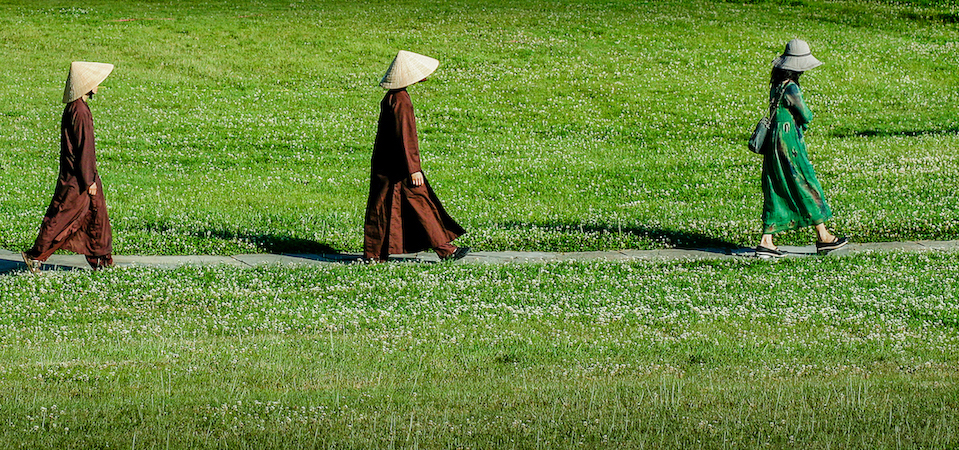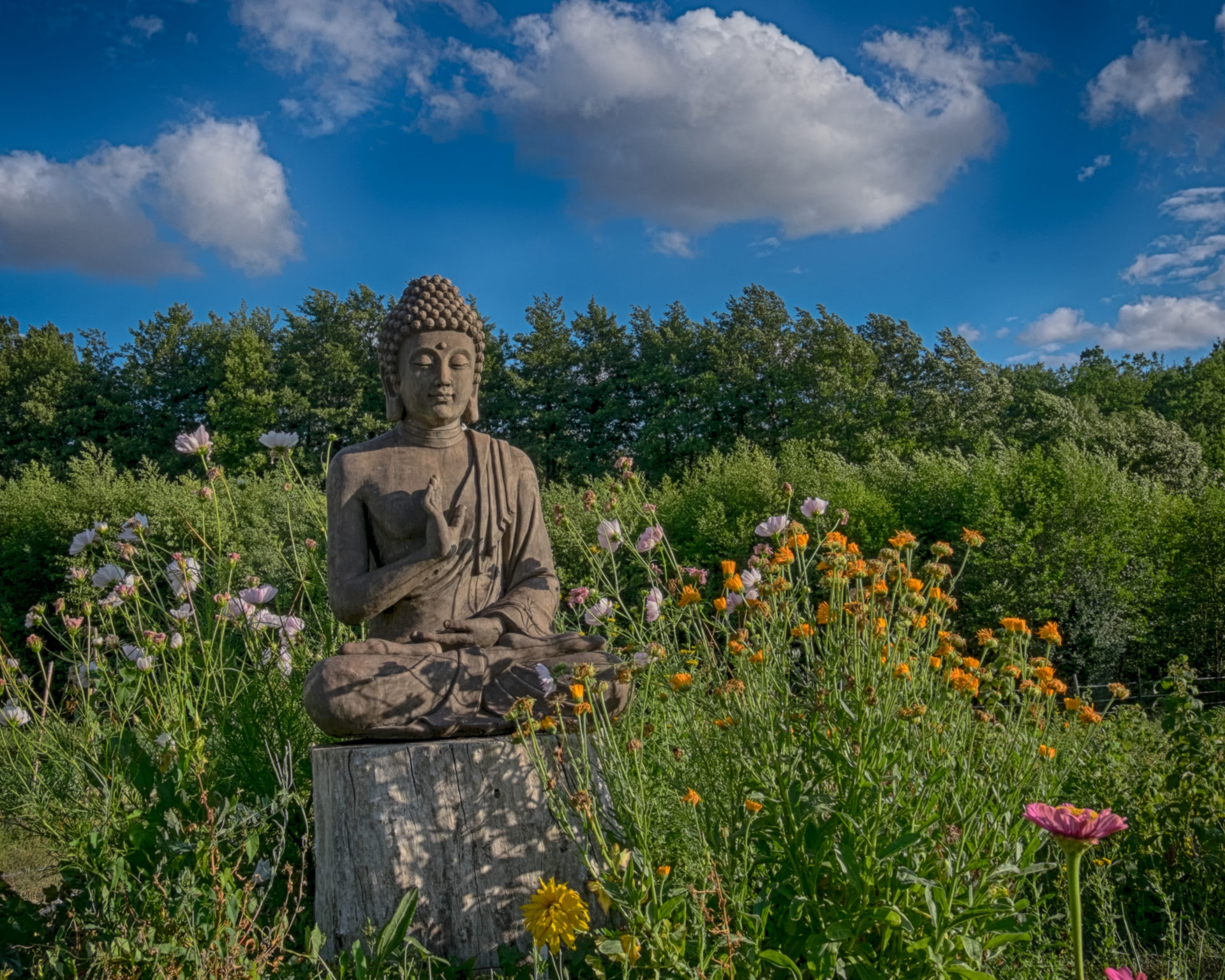By Malin Wahlström

A while back I watched Brother Phap Lai’s Dharma talk on the Plum Village YouTube channel. The theme was the close connection between our body and our mind. During the talk, he mentioned a book on this topic called The Body Keeps the Score by Bessel van der Kolk. Having been a bookworm for most of my life,
By Malin Wahlström

A while back I watched Brother Phap Lai’s Dharma talk on the Plum Village YouTube channel. The theme was the close connection between our body and our mind. During the talk, he mentioned a book on this topic called The Body Keeps the Score by Bessel van der Kolk. Having been a bookworm for most of my life, I was instantly intrigued. It turned out to be an eye-opening book. I filled it with underlines and exclamation marks.
In the six or seven years before I found this book, I had been in therapy with a brilliant therapist who happened to have a lot of experience in treating people with trauma. The first part of my therapy was done in the autumn of 2012 and the second in early 2017. There were things I felt I needed to work with, having had periods with a lot of anxiety for most of my life.
In the book, van der Kolk tells about how trauma is imprinted in the body and the mind. It turns out the brain does not properly handle traumatic events. To turn an event into a memory, the rational and the emotional parts of the brain need to work together. Brain imaging shows the rational part of the brain shuts down during a traumatic event. Therefore, trauma is not really a recurring memory. Trauma is an emotional response felt in the body and mind as if the event were happening in the present moment. I might know when the original event happened and what caused it, but reasoning with the recurring trauma or convincing myself it is in the past simply will not work.
With the support of my brilliant therapist, I started to address experiences and memories I had worked so hard my entire life to keep at arm’s length. I had even repressed some experiences and had no memory of them until they suddenly emerged in therapy. I won’t lie to you; my work in therapy was painful. However, it also brought such immense relief and freedom. I still remember the release and the exhilarating joy when I realised the feelings around my painful experiences didn’t overwhelm me anymore. I could be with them and yet keep a sense of stability.
It was my first taste of true freedom, and it strengthened my resolve to keep doing the work. Although I only saw my therapist once a week, or even every other week, I kept up the work at home. Every afternoon I sat down in silence and invited the memories or feelings of different painful experiences to come up. I felt the painful sensations getting stronger and breathed with them until they calmed down. This practice really helped empower me. The interesting thing is that this took place before I had found the Plum Village tradition and my Buddhist practice. Without even knowing it, I had started practicing in accordance to the Anapanasati Sutta.
During my second round of therapy in 2017, I noticed a space within my consciousness where I ended up returning again and again during therapy sessions. It was a grey wasteland full of fog, where all colors were gone. It brought with it a sense of hopelessness and immense pain and suffering: a feeling of needing to get out but not finding the way, of being stuck with no one to help me. I did not want to visit this place, but I needed to. My therapist encouraged me to go there and start making it more pleasant. I started to “redecorate” and invited happy memories and people I liked into this space. I kept doing it little by little, even after I stopped seeing the therapist.
Just a few months after I had ended my therapy work, I saw a short clip of Thay on YouTube. He was inviting a flame to manifest, and he talked about the Buddhist teachings of impermanence and interbeing. I fell in love with these teachings, and I cherish them every day. There and then I found my path and I’ve been on it ever since.
Even though my therapist specialized in working with people with trauma, until I read van der Kolk’s book I hadn’t realized that my parents’ separation had been a truly traumatic experience for my four-year-old self. At first I tried to deny it. My view of trauma was experiences of war, car crashes, rape, and the like. Surely your parents’ separation wasn’t a real trauma. Van der Kolk taught me otherwise.
It turns out that it is not the severity of the experience that determines whether an event is traumatic. It has to do with the level of control you feel in the specific situation. The more helpless and vulnerable you feel, the more you risk the event turning into trauma. The more I read, the more I understood why some events or situations in my life left me in a state of complete fear, unable to reason myself out of it. I could finally call it by its true name: trauma.
That grey wasteland within my consciousness was trauma, the remains of an event my brain hadn’t been able to process, a place frozen in time. Suddenly, this insight came pouring into my consciousness: that grey wasteland, the trauma, is what permanence is, or what it could mean if there were such a thing. When time and space freeze, they leave no room for growth or learning from your painful experiences. When I end up reliving the same event, the same feelings and perceptions arise again and again. That is the nature of trauma, and at time the nature of permanence.
Today, the grey wasteland is not so grey. The sun, clouds, trees, and all of life have started to come back. Perhaps some part of it will always remain, and in a way, I welcome it. It will serve as a reminder, a bell of mindfulness, of not wanting things to be permanent. Instead, I vow to do my best to put my trust in the ever-flowing river of life. To embrace the changes of my body, the seasons, and my loved ones. Like Thay has said on numerous occasions: impermanence makes life possible.

Malin Wahlström, Joyful Interbeing of the Heart, has been a Plum Village practitioner since 2017. She works as an art teacher and enjoys gardening and being in nature. She is currently an aspirant to become an Order of Interbeing member.

